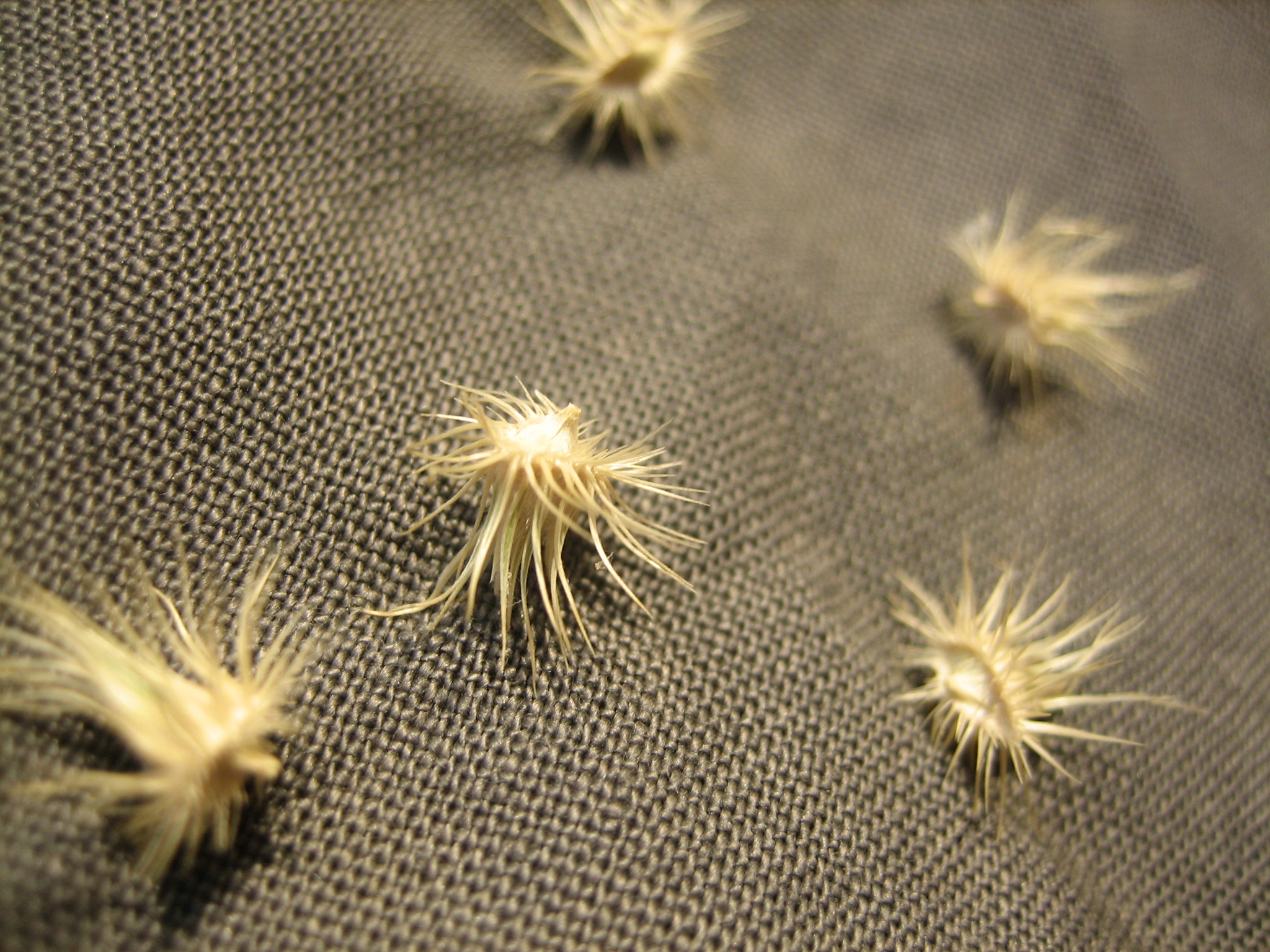- Cenchrus biflorus
regnum =Plant ae
divisio = Magnoliophyta
classis =Liliopsida
ordo =Cyperales
familia =Poaceae
genus = "Cenchrus "
species = "C. biflorus"
binomial = "Cenchrus biflorus"
binomial_authority =Roxb.
synonyms ="Cenchrus biflorus" is a species of
annual grass in thePoaceae family. Common names include Indian sandbur, "Bhurat" or "Bhurut" in India, "Haskaneet" inSudan , "K 'arangiya" in theHausa language ofNigeria , and "Ngibbi" in theKanuri language of Nigeria. ["Famine foods: Poaceae or Gramineae" Purdue University Department of Horticulture and Landscape Architecture [http://www.hort.purdue.edu/newcrop/FamineFoods/ff_families/POACEAE.html] . Accessed December 29, 2007.] In the francophone countries of the Sahel, it is usually referred to as "cram-cram".It is common in the
Sahel savannas of Africa, south of theSahara . ["Sahelian Acacia savanna" WWF Scientific Report [http://www.worldwildlife.org/wildworld/profiles/terrestrial/at/at0713_full.html] . Accessed December 29, 2007.] According to abotanic al criteria of geographerRobert Capot-Rey , the northern limit of "Cenchrus biflorus" defines the southern boundary of the Sahara.cite journal
author = Grove, A.T., nicole
year = 1958,2007
title = The Ancient Erg of Hausaland, and Similar Formations on the South Side of the Sahara
journal = The Geographical Journal
volume = 124
issue = 4
pages = 528–533
issn =
doi =
url = http://links.jstor.org/sici?sici=0016-7398(195812)124%3A4%3C528%3ATAEOHA%3E2.0.CO%3B2-3
accessdate = 2007-05-23 ] cite book
author = Bisson, J.
year = 2003
title = Mythes et réalités d'un désert convoité: le Sahara
publisher = L'Harmattan
isbn = fr icon]It is also found in India, where the seeds are used in
Rajasthan and itsMarwar region to make bread, either alone or mixed withBajra (millet). ["Famine foods: Poaceae or Gramineae" Purdue University Department of Horticulture and Landscape Architecture [http://www.hort.purdue.edu/newcrop/FamineFoods/ff_families/POACEAE.html] . Accessed December 29, 2007.]Uses
A traditional food plant in
Africa , this little-known grain has potential to improve nutrition, boost food security, foster rural development and support sustainable landcare. [cite book |authorlink= |author=National Research Council |editor= |others= |title=Lost Crops of Africa: Volume I: Grains |origdate= |url=http://www.nap.edu/catalog.php?record_id=2305 |format= |accessdate=2008-07-18 |edition= |series=Lost Crops of Africa |volume=1 |date=1996-02-14 |publisher=National Academies Press |location= |isbn=978-0-309-04990-0 |oclc= |doi= |id= |pages=262 |chapter=Wild Grains |chapterurl=http://books.nap.edu/openbook.php?record_id=2305&page=251 |quote= |ref= ]References
Wikimedia Foundation. 2010.

